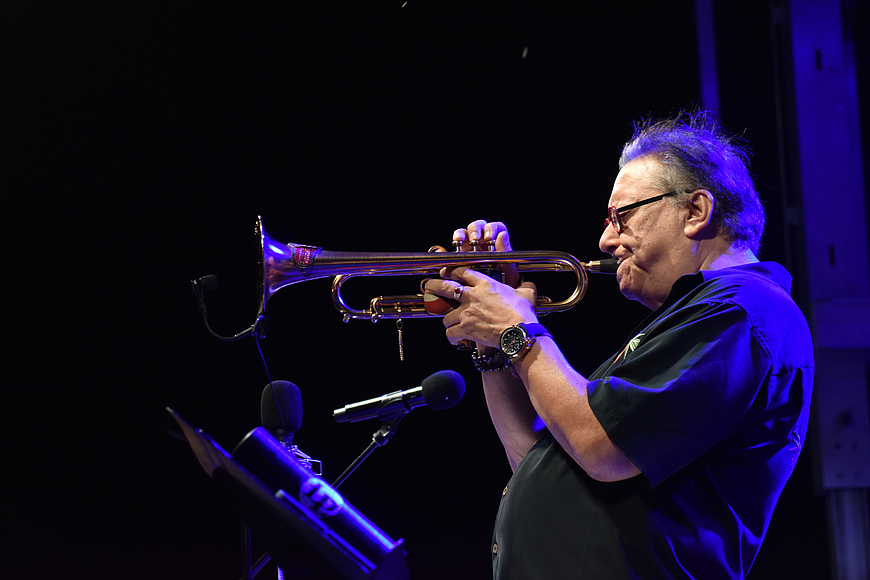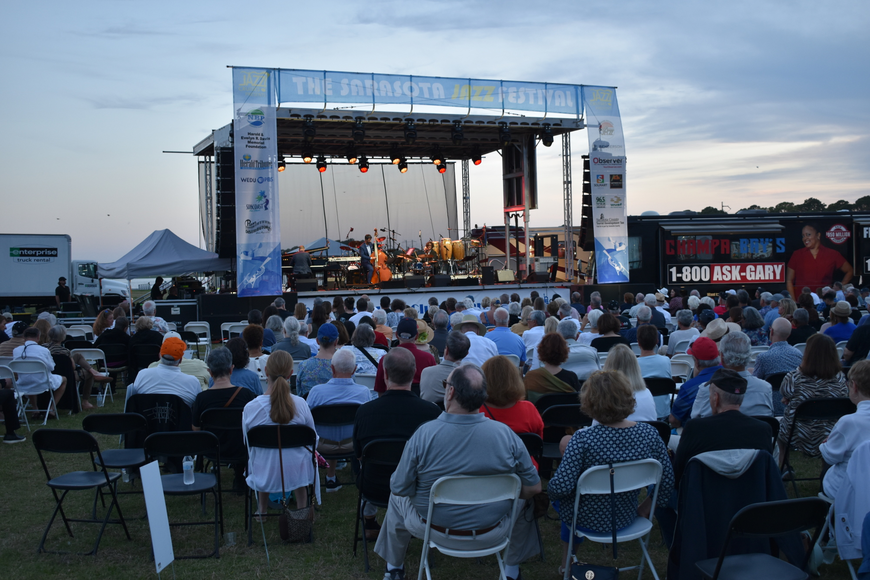- April 23, 2024
-
-
Loading

Loading

If only Hal Davis could see the Jazz Club of Sarasota now.
Jazz, one of the original American art forms, was once an undernourished passion in Sarasota, but over the decades it has developed into one of the city’s most ubiquitous calling cards.
The club birthed by Davis with listening parties in his home has grown into a regional institution with hundreds of members and partnership agreements with several local venues. And it might be ready to grow into an even bigger footprint.
“There’s a need identified there to explore and to evolve the group into a more professionally managed organization,” says Ed Linehan, president of the Jazz Club of Sarasota. “That’s where we are in the development and maturity of this group ... We need professional management and we need staff because there’s a lot of work to be done. Or we need to do a lot less.”

Nobody wants that. If there’s anything the decades have shown, it’s that there’s an appetite for more jazz.
When Davis, a former advertising executive and member of Benny Goodman's management team, relocated to Sarasota, he quickly found a lot of like-minded people. His small group of music aficionados quickly outgrew his living room, his condominium’s meeting room and even a third location at a bank community room.
Davis established a roster of performers, a series of concerts and also the Sarasota Jazz Festival, which held its latest incarnation at Nathan Benderson Park in March.
But Davis, who died in 1990, might not recognize the club he started.
“It was a social group and then became a membership group. It grew amazingly, but without a master plan,” says Linehan. “It wasn't a decision to start an opera company, a theater or a ballet company. It was people who just enjoy the kind of music and recognize that there was a lot of local talent, some of which had retired here from a professional career. And it grew to a point where things like the festival and other events also brought in talent from outside of the area every year.”
Now the group doesn’t just build the audience; it helps to develop the artists.
It raises more than $20,000 in scholarships to higher education for young artists every year, and it helps organize events multiple nights a week during its respective seasons. The Jazz Club has its Monday Night Jazz Cabaret series, hosted by Florida Studio Theatre, in addition to its Friday Jazz at Two performance series at Unitarian Universalist Church.
Between those two series, you’re talking about more than 40 performances per year. The club’s newest offering, Jazz Thursdays at the Sarasota Art Museum, have also brought in a dedicated following. Linehan says the jazz club now has more than 800 members, but the Thursday series is notable because it is mining a different set of subscriber.
“We think beyond another venue for jazz to perform, what’s good for the club in that partnership is an exposure to people in their audience who aren't jazz club members," said Linehan of Jazz Thursdays.
Nancy Roucher, the club’s chair of the music committee, has been deeply involved in the club's maturation for decades. She calls Davis, "a genius masquerading as an advertising man," and she says she's fortunate that she got to know him. Her husband, Jerry Roucher, took the mantle from Davis and ran the Jazz Club of Sarasota for a decade.
Over time, the club began to not just foster jazz appreciation but to enrich the community from within, and its expanded performance calendar has given regional artists the chance to showcase their skills to a wider audience. Some of those artists are teachers, and some of them are local scholarship winners who have brought their career to a higher level.
Roucher singles out cellist Isaac Mingus, who recently performed in Knoxville, and pianist Liston Gregory III.
“He was at our first cabaret this year,” she said of Gregory. “He grew up in the community and went to the University of North Florida, which is known for its jazz program. He’s now touring with a nationally known group, and he’s been to Singapore and all over the world. He’s a fantastic pianist, and that’s probably one of our most successful scholarship winners. But some of them are in bands, and others have become teachers. It’s a really nice energy.”
Adversity appeared on the horizon a couple years ago for the Jazz Club, much like every other industry in America.
Linehan says the club’s membership was at 960 people in March 2020, nearly doubling as the result of a 15-month campaign to bring in new faces.Then came the COVID-related performance slowdown and shutdown, and the memberships dwindled. Recovery has come slowly; Linehan says that many people did come back once performances resumed, but he estimates that there’s at least a few hundred subscribers that never returned after the pandemic.
What's next on the horizon? The club's five-year plan indicates that it hopes to add more subscribers and to increase its operating revenue over the next few years, which will help it develop and maintain a full-time staff.
The club has added one full-time office manager, but a lot of the essential duties are currently performed by contractors.
There's also one other big potential step for the club in the coming years and decades.
Will the Jazz Club of Sarasota be looking to build its own facility? That's not feasible at this point barring a major building campaign, but Linehan wanted to at least put it on the agenda for members to contemplate.
“It's a valid question to ask, and to explore what it would take,” says Linehan. “Are there virtues? Are there disadvantages? Right now, in a sense, we have the advantage of total flexibility. We're not locked into a building that we actually own.
“On the other hand, if we have an idea to do something more spontaneous, the first question is, ‘Where can we do this?’ And then you're dealing with established schedules and availability, and prices and size. But we do pick up the flexibility of not being locked into our own facility; we do pick up flexibility of taking advantage of many, many different places.”
The very thought of building its own facility was so far away when Davis began the club that it makes an interesting footnote. Davis was building the Jazz Club of Sarasota in a city with appetites it could not yet satisfy; but if you look at the environment it was born into, you can begin to understand why there is still limitless potential to grow.
“They had the Asolo," says Roucher. "The opera was still in its infancy. They had the orchestra. And they had the Ringling Museum. But they didn’t have any jazz, and that’s what he loved to listen to. So he and his wife started inviting people over to their house to listen to records in their living room. And that's how the jazz club started.”